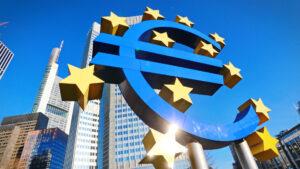-

Giorgio Falchi
Research Associate
Robert Schuman Centre for Advanced Studies

Read more
Blog
Ample liquidity puts the ECB’s independence at risk
The central bank must maintain control of its balance sheet The European Central Bank’s policy orientation – a gradual but rapid series of interest rate hikes to rein in inflation – is now clear....
Summary
One of the most overlooked aspects of ECB monetary policies is their potential spillovers in emerging market economies (EMEs). Given the prominent role played by the euro in the global economy, recent decisions by the ECB to shrink its balance sheet and hike interest rates might have negative repercussions on EMEs which are already economically stressed.
A shift in the ECB monetary policy
The actions of the ECB are of particular importance not only because of the size of the euro economy and its balance sheets but also because of the international role of the euro and its influence on international interest rates.
Given the volume of trade and the significant current account surpluses and deficits in a much more globalised world, the issue of spillovers from monetary policies has come to the forefront in international policy discussions. Due to a combination of slow growth and below-target inflation, in 2014 along with other major central banks the ECB started a large-scale purchase of government bonds and private assets funded by issuance of central bank reserves, known as quantitative easing (QE). This monetary policy lasted until 2018 and led to a doubling of the ECB balance sheet size. This course of action was repeated twice: in 2019, when inflation was slowing down; and in 2020 in response to the effects of the COVID-19 pandemic on the economy. However, in 2022 higher energy prices due to the war in Ukraine combined with supply-side bottlenecks caused by the ongoing COVID-19 pandemic in some regions of the world and rapid reopening of the euro area economy triggered a dramatic increase in inflation in the euro area, up to double digits for the first time in four decades. Therefore, the ECB reverted from QE to quantitative tightening by hiking interest rates on the marginal lending facility by 425 basis points (bps) between July 2022 and August 2023 and shrinking its balance sheet. While the effects of these decisions on the eurozone countries are the object of daily debates, possible spillovers in developing countries are much more neglected.
Its consequences on emerging market economies
When the QE policies were being implemented, the ECB quickly became the leader in purchasing agency securities, asset backed securities and treasury securities. Since there is a limited amount of these products, which suddenly became the exclusive investment avenues for central banks, private investors started looking for new opportunities in emerging market economies (EMEs), which experienced inflows of capital. Now, the shrinking of the ECB balance sheet might lead to an outflow of capital from EMEs, or at least increased volatility in already fragile markets.
A change in the direction of capital flows will have a direct influence on exchange rates: while an inflow of foreign capital into EMEs leads to persistent appreciation of its real exchange rate (as happens with ECB QE), an outflow of foreign capital from EMEs would make the real exchange rate depreciate. A depreciation of the currency can hit firms with debts in foreign exchange (e.g. in US dollars or euros) in emerging markets and cause financial fragility, with an overall negative effect on the economy.
Similar negative effects might stem from the decision of the ECB to hike interest rates: those who had shifted investments to emerging markets attracted by higher rates of return may rapidly/unexpectedly switch to the EU market, which suddenly becomes more appealing. In fact, in the first half of 2022, as the ECB and other developed country central banks accelerated the pace of interest rate hikes, non-resident portfolio capital flows to emerging economies sharply declined. Furthermore, a quarter of government debt in key emerging countries was denominated in foreign currencies in 2020. Even if the lion’s share of EMEs’ foreign currency debt is in US dollars, an interest rate increase by the ECB would heighten the borrowing cost and make financing debt repayments more difficult, thus contributing to debt distress.
The potential negative impact of a tightening of ECB monetary policies also depends on the overall financial context. In particular, the sharp policy tightening that followed a prolonged period of muted inflation and extremely low interest rates, has triggered sizable losses on long-term fixed-income assets. Furthermore, the sharp tightening of global financial circumstances could have a dramatic impact on credit terms and public finances, especially in EMEs, with capital outflows, a sudden increase in risk premia, a dollar appreciation in a rush toward safety and a major decline in global activity amid lower confidence, household spending and investment.
Finally, the ECB’s policies can interact with the monetary policies of other major central banks, such as the US Federal Reserve and the Bank of Japan. A lack of policy coordination or divergent policy actions can create spillover effects in EMEs, leading to challenges in managing monetary and exchange rate stability.
A thorny issue for EMEs central bankers
Of course, it would be a mistake to assume that the impact of ECB monetary policies will be felt equally in all EMEs. The countries most affected are going to be those with a more open capital account and greater financial linkages with the euro area, and EMEs with a high level of foreign (European) ownership in local debt and equity markets relative to official foreign exchange reserves are at the greatest risk. Consequently, European EMEs are more exposed to spillovers from the ECB tightening policy, as they are more dependent on European funding than EMEs outside the EU. For example, in 2022 eurozone investors owned a significant share of outstanding portfolio investment in European emerging economies, ranging from about 40% in Turkey to more than 70% in the Czech Republic. By contrast, only a quarter of the total portfolio investment in South Africa originates in the eurozone.
Overall, in EMEs, monetary and supervisory authorities are confronted with substantial challenges and difficult choices. The combination of price pressures, increasing interest rates in major developed nations and a subdued economic outlook has made trade-offs between growth, inflation and financial stability more intricate, especially considering the significant uncertainties and risks involved. Additionally, there is growing concern that an extended period of elevated borrowing costs could further hinder investment, growth and development prospects. Given this situation, if the major economies were to conclude their cycle of tightening monetary policy, it would create a much-needed opportunity for central banks in developing countries to adjust and recalibrate their monetary policy strategies.
